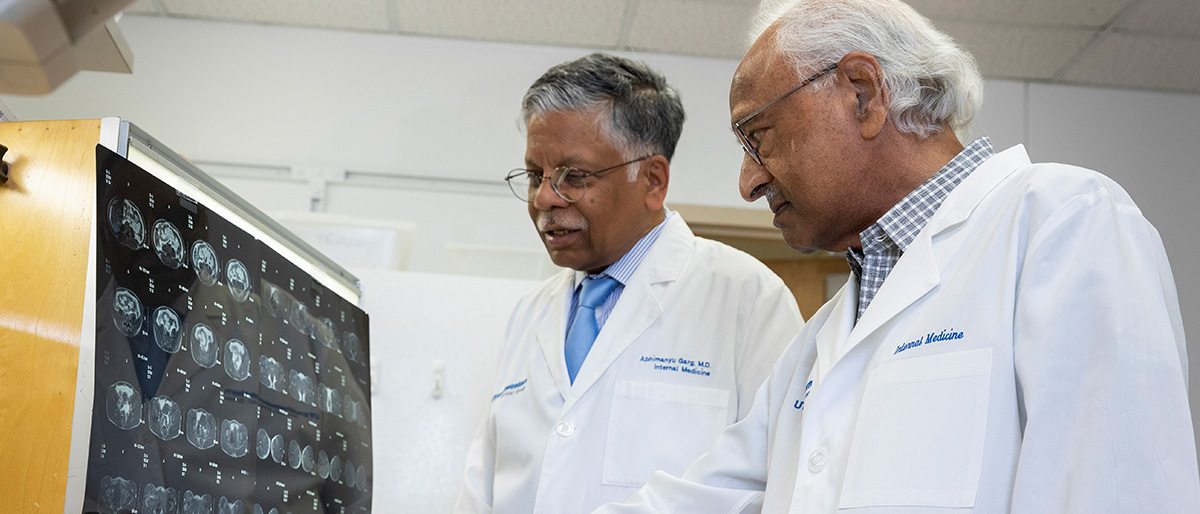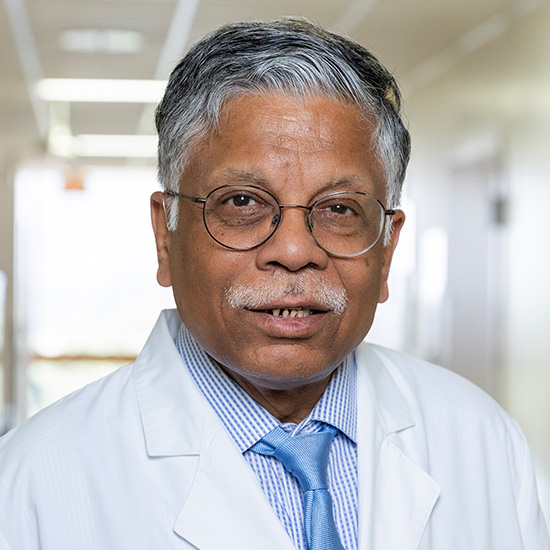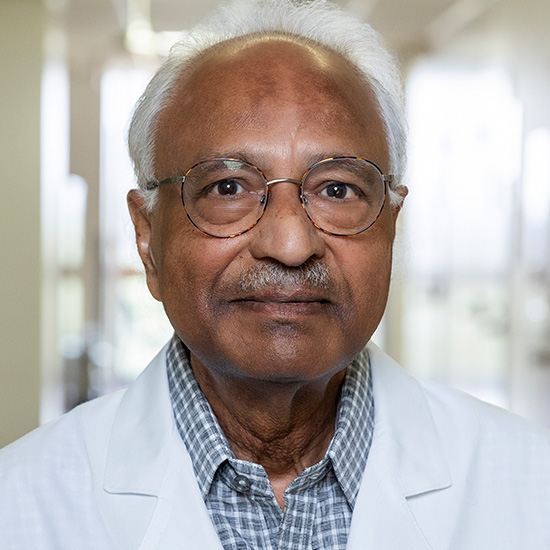Work on fatless mice reveals key role of fat-synthesizing enzyme

UTSW researchers studying fatless mice that lacked a key enzyme report that reintroducing that protein into cells partially reverses the fat storage disease called lipodystrophy as well as improves metabolism. The findings may have implications for future treatments of some patients with Type 2 diabetes who have abnormal body fat distribution.

Genetic lipodystrophies are extremely rare disorders affecting about one in 1 million people. An extreme form of genetic lipodystrophy – which results in almost complete lack of body fat but increased prevalence of metabolic issues such as fatty liver, diabetes, insulin resistance, and high blood triglyceride levels – is due to the deficiency of this enzyme, AGPAT2.
“Our findings reported in the journal iScience now suggest that it may be possible one day to develop a gene therapy for patients with congenital generalized lipodystrophy,” said lead investigator Anil Agarwal, Ph.D., Professor of Internal Medicine. Dr. Agarwal works closely with Abhimanyu Garg, M.D., the world’s leading researcher on lipodystrophy, who is also a Professor of Internal Medicine and Director of Metabolic Diseases in the Center for Human Nutrition at UT Southwestern.
“The study of rare diseases has benefits in wider areas of diseases, such as Type 2 diabetes, hypertriglyceridemia, and fatty liver related to adipose tissue dysfunction,” Dr. Garg said.
Drs. Agarwal, Garg, and their colleagues focused on AGPAT2, the gene that encodes its enzyme counterpart that is essential for building the fat and phospholipids inside adipose (fat) cells. They developed a fatless mouse model of generalized lipodystrophy lacking the AGPAT2 enzyme that reproduces features of the human diseases: fatty liver, diabetes, insulin resistance, and hypertriglyceridemia.

Despite the model’s usefulness, it did not sufficiently explain the disease’s origin. Therefore, they further genetically engineered AGPAT2-deficient mice and reintroduced the human AGPAT2 gene in their adipose cells under the control of an antibiotic. This enabled researchers to turn the AGPAT2 gene on and off by adding or withholding an antibiotic to the rodents’ diet. They showed that reintroduction of the AGPAT2 enzyme in adipose cells led to partial regeneration of body fat and marked improvement in fatty liver and insulin resistance.
“AGPAT2 is a key enzyme involved in generating new fat cells from immature cells – the unanticipated finding – and in synthesizing fat inside adipose cells,” Dr. Agarwal said.
In other experiments, the researchers overexpressed the AGPAT2 gene by genetic engineering in healthy, wild-type mice, which caused mild obesity and liver dysfunction.
These findings were reported in three papers in iScience:
Agarwal, A.K., et al., “Regulated adipose tissue-specific expression of human AGPAT2 in lipodystrophic Agpat2-null mice results in regeneration of adipose tissue,” iScience 26, 107806, Oct. 20, 2023.
Agarwal, A.K., et al., “Adipose-specific overexpression of human AGPAT2 in mice causes increased adiposity and mild hepatic dysfunction,” iScience 27, 108653, Jan. 19, 2024.
Agarwal, A.K., et al., “Regulated regeneration of adipose tissue in lipodystrophic Agpat2-null mice partially ameliorates hepatic steatosis,” iScience 27, 109517, April 19, 2024.
Dr. Garg holds the Distinguished Chair in Human Nutrition Research.

